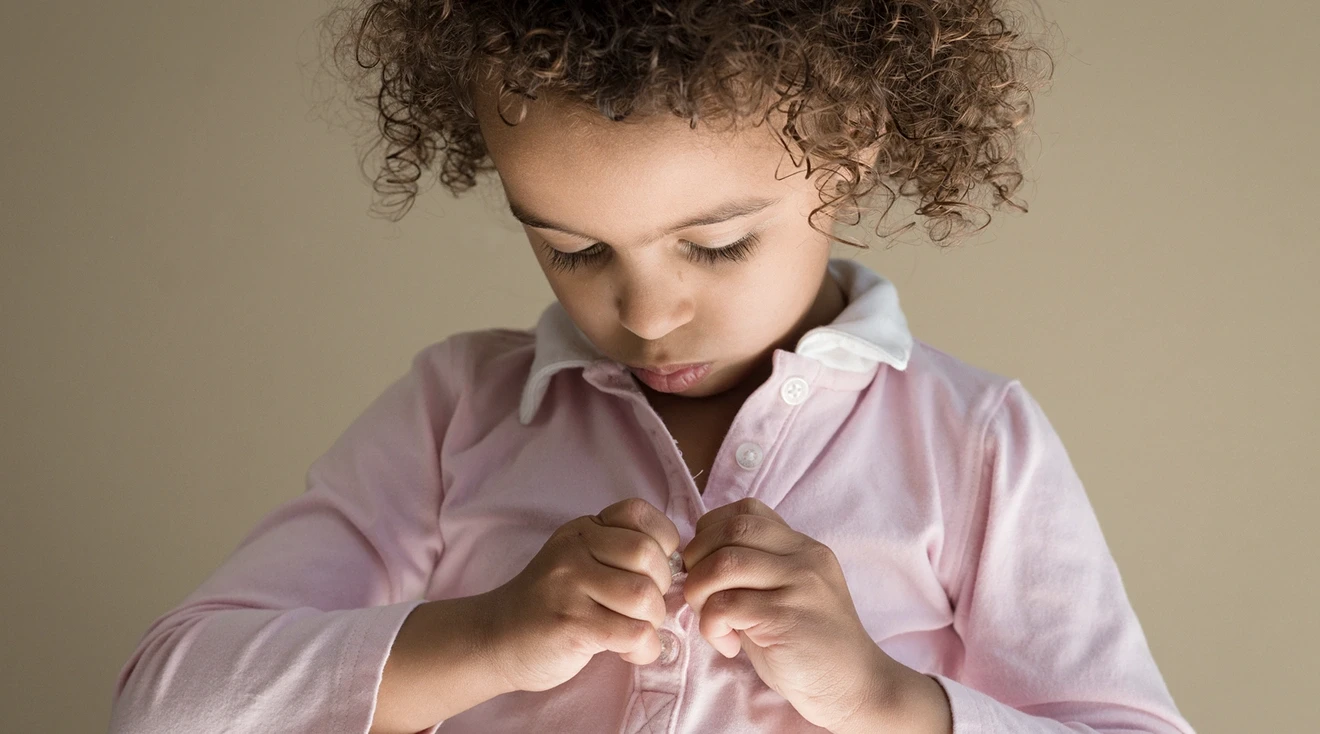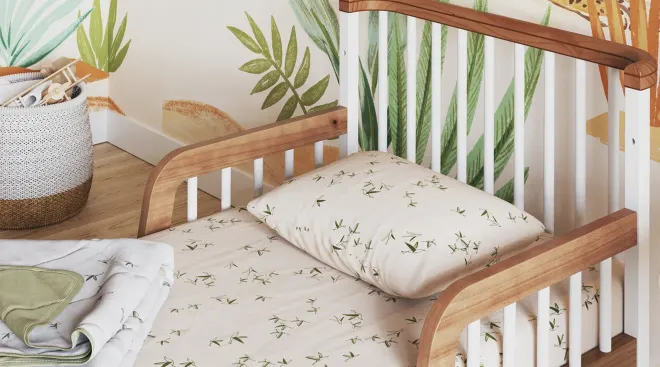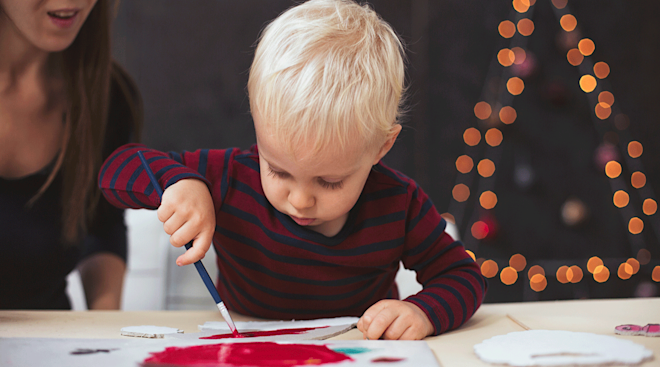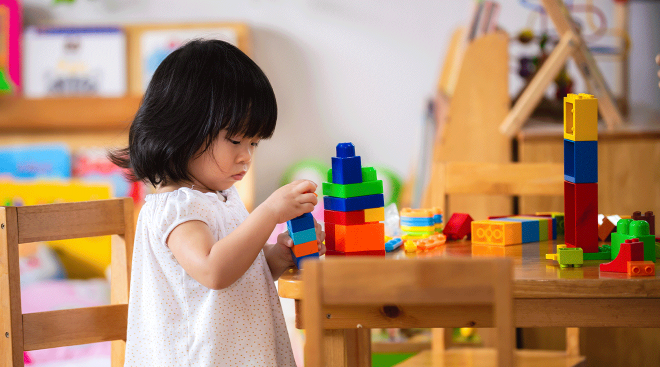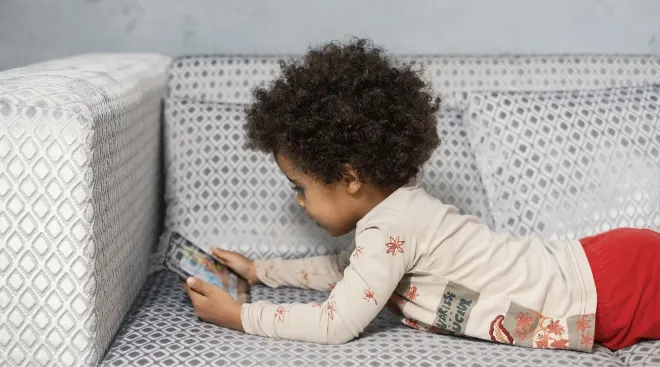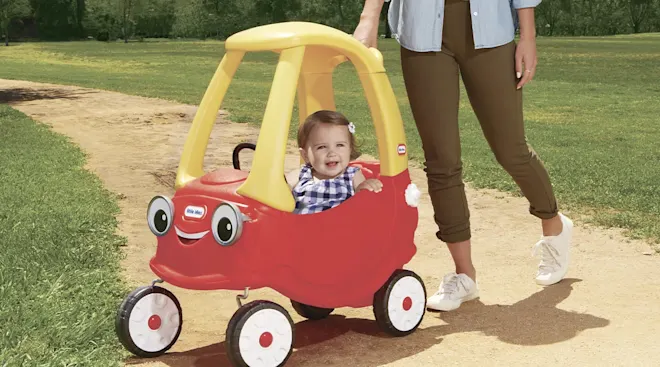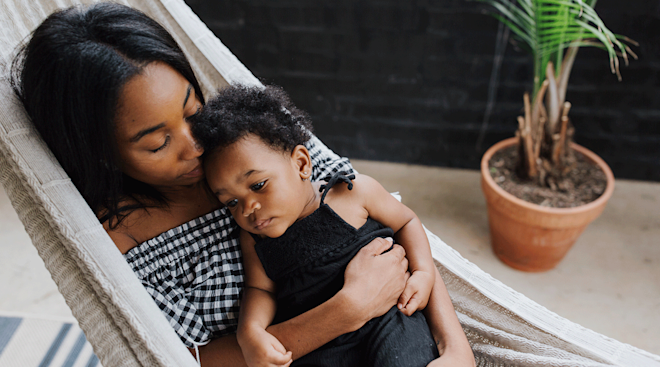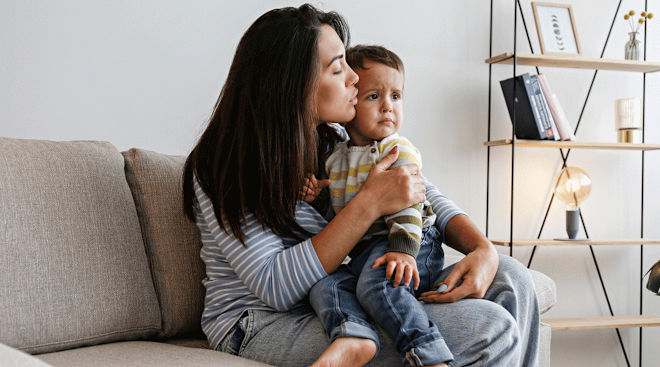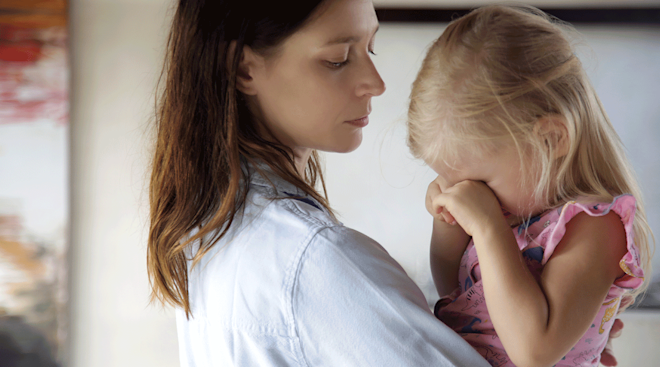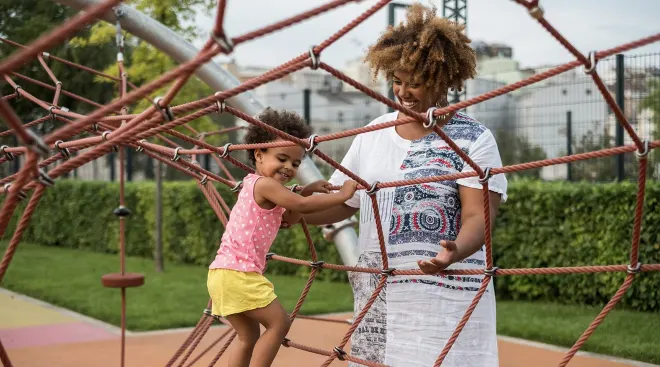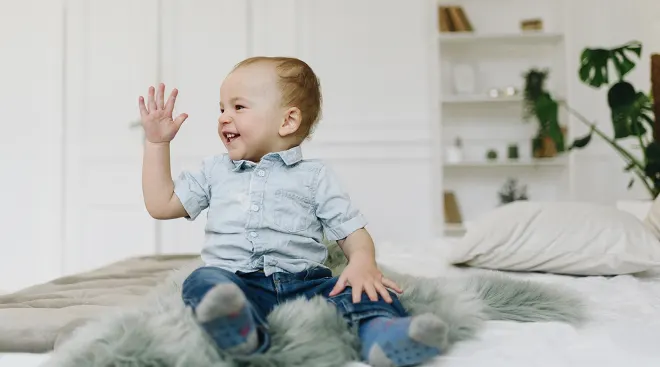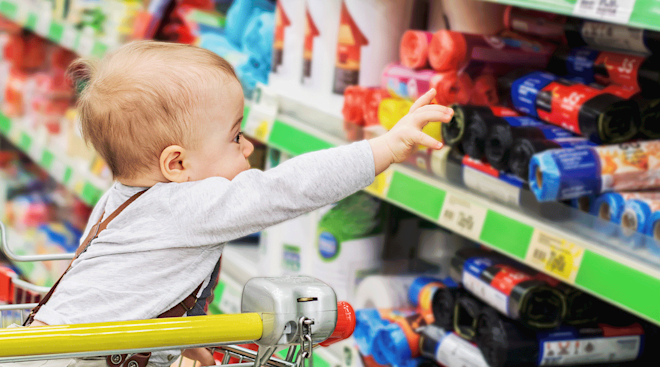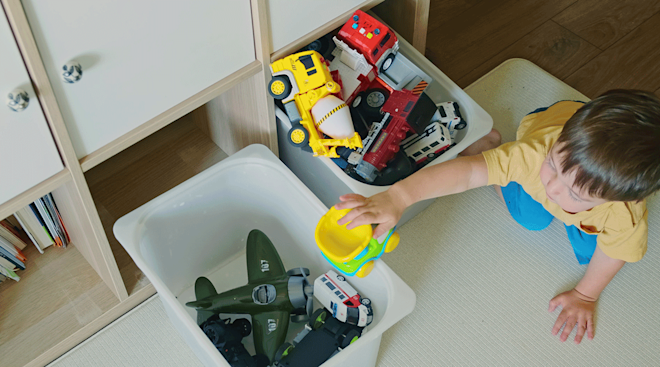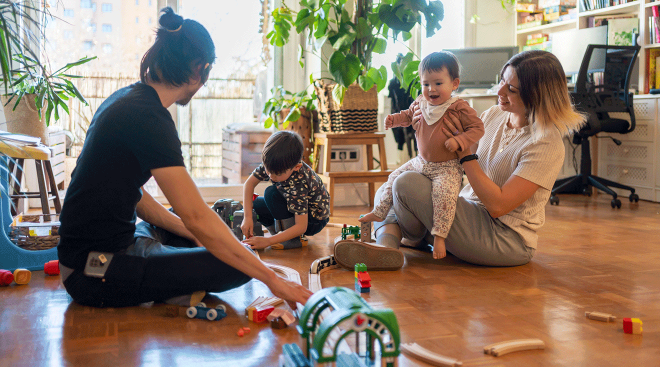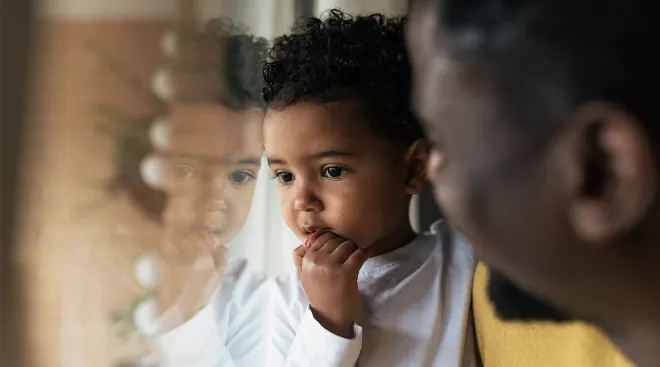14 Tips and Tricks to Help Your Toddler Dress Themselves
Where does the time go? You blinked, and suddenly baby is a walking, talking toddler. They can have a blossoming personality, and their desire for independence is stronger than ever. For many parents, this is an exciting time! (Finally, your little one can do some things on their own.) But the power struggles over getting dressed can be stressful to say the least.
Learning to put on clothes can be a tricky skill to master, but the good news is that it supports several different areas of development. Ready to help your child get the hang of it? Read on to learn why you should encourage autonomy in this routine—plus, get tips and tricks to encourage your kiddo along the way.
Toddlers aren’t the easiest creatures. They have strong opinions; it can sometimes feel easier to do things for them, rather than face resistance and tantrums. But teaching your child to dress themselves has a plethora of benefits. Certainly, it may be the cause of a few style-focused squabbles, but overall, it’ll help them learn and grow. Below, a few of the top reasons to foster this skill:
Fine motor skills are practiced
Maneuvering snaps, buttons and clips helps strengthen your tot’s fine motor skills. Using their tiny fingers for dressing improves their hand-eye coordination and finger dexterity, says Vierheller. And their hands get stronger the more they practice.
Cognitive skills are built
Toddlers practice decision-making and critical thinking and get to express their creativity when choosing an outfit, says Vierheller. What’s more, they have to use problem-solving skills to figure out how to get their clothes on the correct way.
“Engaging in the act of undressing and dressing independently allows toddlers to learn through cause and effect and work on problem-solving and perseverance,” says Veirheller.
Sequence awareness is another essential skill they practice when dressing. Going through a step-by-step process helps them master routines. This also allows them to hone their focus, something most toddlers struggle with.
It promotes language learning
Learning to get dressed builds valuable language skills too. Use it as an opportunity to broaden their vocabulary. Talk about different types of clothing, accessories, body parts, colors and textures during the dressing process, suggests Lauren Vien, M.Ed., a New York City-based teacher and the education director of Rose & Rex.
Creativity is fostered
Toddlers have emerging personalities and budding opinions. Putting their own outfits together helps promote creativity and gives them a rewarding sense of self.
It encourages an understanding of weather
As adults, we consider the weather when dressing for the day ahead. Children don’t necessarily think of the consequences when choosing their outfits. (Your little fashionista just wants to wear the sparkly pink dress!) This presents a learning opportunity and a conversation starter. “By engaging in these discussions, we can promote learning and foster curiosity and flexibility in young children,” says Anjali Ferguson, PhD, PsyD, a clinical psychologist and children’s author. Talk to your child about the weather daily and use descriptive words like “hot,” “windy,” and “cold,” and then discuss which clothes are best for the conditions.
Make this extra fun by creating a visual weather chart together. Toddlers are visual learners, says Ferguson. Give them the important job of changing the weather symbols to match the forecast. “This builds collaboration and provides a sense of control in the process,” she adds.
That said, consider only keeping seasonally appropriate options in your child’s closet. “Once that bright-colored bathing suit is on your toddler’s body, it will be tough to convince them to wear a snowsuit today!,” Vien warns.
The learning curve might be slow and steady (and occasionally frustrating), but it’s a total game changer once your child is able to dress themselves. In the meantime, here are a few ways to help them figure it out.
1. Make it fun
Getting dressed can be a monotonous daily activity—and toddlers have no interest in tedium. Make it fun and exciting by turning it into a game. If you’re excited, they’re more likely to be excited too!
Use music for motivation. Vien suggests playing a “family anthem” as everyone gets dressed in the morning. Take turns choosing the song of the day. To make it a challenge, see how far your toddler can get with dressing before the song ends. You can also try to make it a race; use a timer to see how long it takes your tot to put on a clothing item. They can try to improve their latest time every morning!
Amanda Vierheller, co-founder of the online preschool platform Playgarden, suggests using shoe stickers to help toddlers get their shoes on the correct feet. Use a new sticker every day, cut it in half and put one piece on the top of each shoe. When leaving the house, encourage them to “finish the puzzle” and put their shoes on the correct feet. “This trick allows children to succeed, building confidence in putting shoes on independently,” she says.
2. Prepare ahead of time
Whether you hit the snooze button one too many times or find yourself regularly dragging your toddler out of bed, mornings can be stressful.
During their nighttime routine, have your child pick out the next day’s outfit. This will add some calming vibes to mornings in your home. “Laying out clothes the night before allows time for children to focus and encourages decision-making skills,” says Vierheller. Get everything prepared down to underwear, socks and hair accessories so there’s no need to frantically search for a matching bow in the morning!
3. Provide them with limited choices
Giving your child choices is a great way to let them have some independence, but too many options can lead to overwhelm. Ferguson suggests providing two clothing options for them to choose from. “This still provides a sense of control and agency but also makes choosing less daunting and more manageable,” she says.
4. Be available to help
Buttons, fasteners and clips can be difficult for toddlers to use independently. And it can be tempting to jump in and do it for them, especially when they’re struggling and you’re in a hurry. Encourage them to try independently, and tell them you’re there if they need help, but refrain from immediately swooping in to save the day. You can also make it a collaborative effort: Instead of zipping their coat for them, Vien suggests saying, “I’ll get the zipper started, and you can practice pulling the zipper all the way up!”
5. Show them how to do it
Modeling how to get dressed and undressed is a great way to teach your toddler this foundational skill. “Young children are primarily visual learners. Seeing someone else get dressed is the best way to help them learn how to do it for themselves,” says Vierheller.
6. Use larger sizes
Fitting their small arms into tight sleeves can prove tricky. As you’re first teaching your child, provide slightly larger clothing options they can easily slip into. This will help avoid frustration or discomfort. (For the record, elastic waistbands help too!)
7. Start in a seated position
Toddlers aren’t quite balancing pros yet. To help them stay focused and avoid unnecessary tumbles, have them learn from a seated position on the floor. This allows them to concentrate on the main task and reduces the risk of them falling or getting hurt. As their skills improve, encourage them to switch to a standing position.
8. Don’t rush them
Learning a new skill takes time. Avoid teaching new skills on days when you have scheduling constraints. The process can wear on your emotions, and the stress will likely spill over and cause anxiety for you and your child.
No matter how much practice and planning you do, there will be mornings when you feel rushed to get everyone fed, dressed and out the door on time. Remember, putting pressure on your kiddo can be counterproductive—and it may result in a meltdown. It’s completely fine to physically help them get dressed on particularly harried days. Hint: If you’ve got limited time, make a race out of it. Kids move much faster when they want to beat their parents at something!
9. Limit distractions
It’s a good idea to remove distractions when it’s time for your child to focus on getting dressed, advises Vien. Turn off the TV or tablet while working through the steps, and avoid conversations that don’t involve the task at hand.
10. Teach them to identify the front and back of clothing items
Your child will sometimes put their clothes on backwards or inside out. (It’s a fact of life.) That said, teaching them how to identify the fronts and backs of shirts and pants (look for the tag, note the buttons, search for pockets, etc.), will help set them up for success—at least most of the time.
11. Try the “coat flip”
Ready to walk out the door? Your kiddo got dressed, but now it’s time to get on the dreaded jacket. Try the beloved preschool hack: Put the coat on the floor with the buttons or zipper facing up and the hood at your child’s feet. Have your child reach down and put their hands inside the sleeve openings, then ask them to flip the whole jacket over their head. And, voila, your little one is bundled!
12. Create opportunities for independence
Your tot won’t be able to master these skills overnight, but it’s good to provide them with frequent chances to practice and opportunities to succeed. Make clothes easily accessible. Lower the bar in their closet, and put things in bins and drawers at their level.
Also have them help with dressing-adjacent tasks like undressing at night, throwing their dirty clothes in the basket or helping with the laundry. “This encourages them to choose and put them away independently, which helps build responsibility and self-sufficiency,” says Vierheller.
13. Use positive reinforcement
Kids thrive with positive reinforcement, and it’s the best way to solidify the good behaviors you want to see more of. Use positive notes or praise to promote your child’s sense of self and decision-making abilities, advises Vierheller. Ferguson suggests using a sticker chart to help connect their behavior with a positive outcome. They can earn a star for every piece of clothing they put on independently.
14. Keep an open mind
Simply put, your toddler may have a unique sense of style, and their outfit choices might not always align with your aesthetic vision. Keep in mind that this self-expression builds their confidence and self-esteem. “Part of the beauty of this age is the curiosity and exploration of identity,” says Ferguson.
Your child looks to you for acceptance, so encourage their creativity and pick your battles. Don’t worry about matching outfits or shoes. If they feel confident in what they’re wearing and it’s appropriate for the weather or situation, let it go. “Point out that no matter what they wear on the outside, they are the same, amazing kid on the inside,” says Vierheller.
Teaching your toddler to dress themselves is an important developmental milestone that requires lots of patience and plenty of practice. You can make the process easier by encouraging your kiddo’s independence. Celebrate their successes—and recognize that this is a big milestone in your parenting journey too!
Plus, more from The Bump:
Anjali Ferguson, PhD, PsyD, a clinical psychologist, children’s book author and podcast host. She earned her master’s degree from the University of North Carolina at Greensboro and completed her doctor in medical clinical psychology at the University of Alabama at Birmingham.
Lauren Vien, M.Ed., is a New York City-based teacher and the education director of Rose & Rex. She earned her master’s degree in early childhood education from Bank Street College of Education in New York.
Amanda Vierheller is the COO and co-founder of Playgarden Prep, a Montessori-inspired preschool in New York City and Playgarden Online, an educational platform for remote preschool.
Learn how we ensure the accuracy of our content through our editorial and medical review process.
Navigate forward to interact with the calendar and select a date. Press the question mark key to get the keyboard shortcuts for changing dates.
































